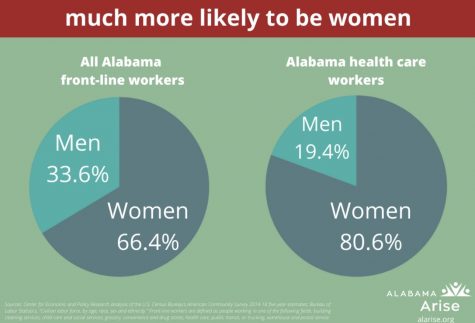The Exodus of Women from the Workforce
Another Casualty of Covid-19
Due to Covid-19, many women have left the workforce. By September 2020, 800,000 women had resigned from their jobs. Eighty percent of the people who have left their jobs due to Covid-19 are women. There are many reasons this is happening, but one of the main reasons is distance learning. Most children are doing distance learning because of school closures due to the Covid-19 pandemic. Distance learning means that children are at home all day, spending several hours online in virtual school. Mothers, especially mothers of young children, have to keep an eye on their children and help them with their schoolwork. This leaves little to no time for them to focus on the professional responsibilities that they need to address. This pull in many directions prompts women to drop out of the workforce because they can no longer meet deadlines and handle the stress of both working and teaching their kids. Another subset of women are leaving the workforce because they are working jobs that put them at high risk of contracting Covid-19. There are significantly more female frontline workers than males.

These jobs not only put them at high risk, but they also cannot watch their children while working these jobs. Many women feel that leaving their job is the better option for them and their families. This decision affects the progress made by women in the workforce over the past years. This loss could potentially set gender equity back an entire generation. Women leaving the workforce will also affect the economy, which will hurt not just women but everybody. According to the Bureau of Labor Statistics, the most recent job report in January projected that 275,000 women left the workforce compared to 71,000 men. Women continue to be disproportionately affected by the impacts of Covid 19. The Center for American Progress predicts that this trend will have a lasting effect on the nation’s economy. The country’s Gross Domestic Production (GDP), which is critical to our economic growth, will be affected by the loss of women’s participation in the workforce and loss of productivity. The GDP is the final value of goods and services produced within the country’s geographical boundaries during a specific period. The GDP’s growth is an integral part of the country’s economic performance.
Local communities will be affected as well. An increase in the unemployment rate and less disposable income, along with general restrictions due to Covid will tremendously affect small businesses. There will be less foot traffic which causes a decrease in revenue. This change has been causing small businesses to shut down. The Economic Impact report suggests that 163,000 businesses have closed. Of the 163,000, over 97,000 will be permanently closed.

The federal government is stepping in to aid in the economic recovery through COVID-19
Relief packages. These packages include jobless benefits, small business aids, and stimulus checks for families. In addition to the covid 19 relief packages there are major efforts underway to vaccinate all Americans. With these steps in the right direction there is hope that circumstances will improve both for women in the workforce and our country’s economy in general.
Sources:
Julie Kashen, S. (n.d.). How covid-19 sent women’s workforce progress backward. Retrieved March 05, 2021, from https://www.americanprogress.org/issues/women/reports/2020/10/30/492582/covid-19-sent-womens-workforce-progress-backward/
Vesoulis, A. (2020, October 17). Women’s covid-fueled exodus from the Workforce hurts us all. Retrieved March 05, 2021, from https://time.com/5900583/women-workforce-economy-covid/
Wakeley, D. (2020, October 08). Working in Alabama during the Covid-19 PANDEMIC: Who faces the danger? Retrieved March 05, 2021, from https://www.alarise.org/blog-posts/working-in-alabama-during-the-covid-19-pandemic-who-faces-the-danger/
Gender economic inequality. (2021, February 03). Retrieved March 05, 2021, from https://inequality.org/facts/gender-inequality/
Silva, D., & Miranda, L. (2021, February 08). About 275,000 women left workforce in January In ‘CRITICAL’ PANDEMIC TREND, experts say. Retrieved March 05, 2021, from https://www.nbcnews.com/news/us-news/about-275-000-women-left-workforce-january-critical-pandemic-trend-n1256942
Sundaram, A. (2020, December 11). Yelp data shows 60% of business closures due to the coronavirus pandemic are now permanent. Retrieved March 05, 2021, from https://www.cnbc.com/2020/09/16/yelp-data-shows-60percent-of-business-closures-due-to-the-coronavirus-pandemic-are-now-permanent.html


